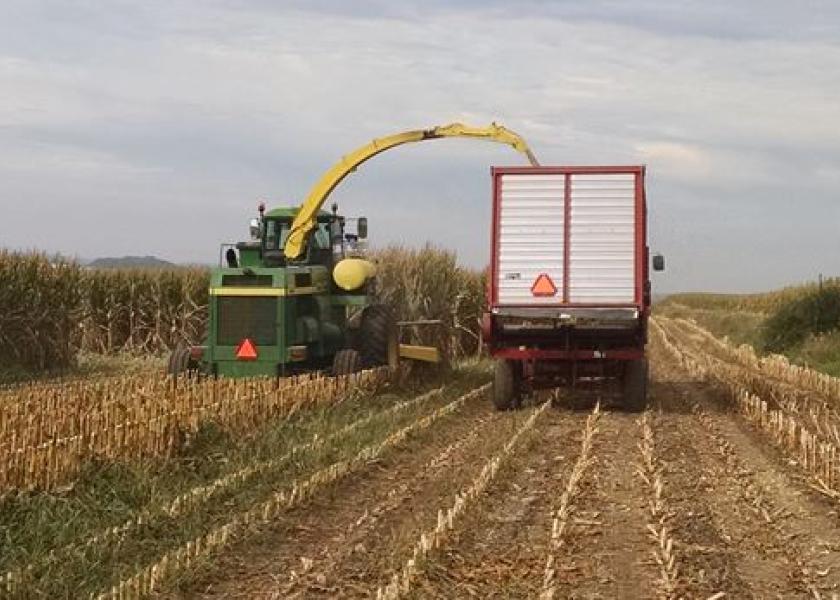High-Cut Versus Traditional Cut Silage – Which Is Right for You?

High-cut silage harvest is an option for producers, but is it right for your operation? It all comes down to tonnage.
As the name implies, high-cut silage is simply raising the header higher than the usual cutting of four to six inches off the ground and leaving more of the bottom portion of the corn stalk in the field. How high to cut is a personal preference – 12 to 18 inches is typical, but some go higher.
“It's all going to depend on feed inventory needs for the season. How much tonnage is needed to feed the herds and what kind of nutritional constituents are necessary to get off the field,” said Kevin Shinners, professor at the University of Wisconsin-Madison. “To set up the forage harvester, there are no other changes—use the same theoretical length of cut and the same processor roll gap.”
High-cut advantages
Nutritional advantages of high-cut silage include a lower NDF content in the corn silage and a higher starch concentration. Because the bottom portion of the stalk is highly lignified and fibrous, it lacks in nutritional content. Thus, with high-cut silage, you’ll harvest higher quality silage, but the downside is the loss of yield from leaving material in the field.
“A number of studies have looked at yield loss and depending on how high the stalk is cut, yield loss will be 5% to 12%,” noted Shinners. “However, you don't lose that much milk yield per acre because the silage that you're harvesting has greater fiber digestibility and is a higher quality feed. Loss in milk yield per acre is about 2% to 4%.”
A higher quality feed may also mean a producer won’t need to feed as much grain which has an obvious economic benefit. There may be years when your haylage yields were good, and a producer simply doesn't need the tonnage. Or like 2019, the wet weather throughout much of the season left farmers needing to make up for lost tonnage.
“It's going to be a year-by-year decision for producers,” he said. “With BMR corn, high-cut harvest may not be best because the stalk is relatively digestible compared to other varieties of corn, so be sure to talk to your nutritionist.”
If you consider the stalk from bottom to top, it gets progressively drier, as you move up the stalk. When using the high-cut approach, producers can start harvesting a little bit earlier than normal because harvest will leave the wettest bottom portion of the stalk in the field.
“Typically, high-cut harvest will start a few days ahead of traditional harvest, but keep in mind that when using high-cut, the top portion of the stalk is drier, and the leaves can dry out more quickly,” Shinners explained. “If doing a whole-plant moisture analysis to determine harvest timing, don’t take the whole plant—only use the portions of the plant that you’ll be harvesting.”
An additional high-cut benefit is that studies indicate the kernel processor may be more effective because there’s less tonnage of stalk running through the machine.
“This isn’t a dramatic effect, but we are seeing smaller particle size of the kernel fraction with high-cut compared to a more conventional cut,” he noted.
Headline image of high-cut harvest research courtesy of Dr. Shinners, University of Wisconsin
To read more articles like this one:
Dairy Herd Management
Plan to Harvest: Tips for a Successful Harvest
Tips to Maximize ROI at Harvest
Harvesting and Feeding Corn Stalks
Drovers
Hitting the Sweet Spot: When to Harvest Corn
Corn Silage: Predicting Harvest and Moisture Level for Better Quality
Silage Harvest Plans








